Movie Review – Lord Of The Rings, The: The Extended Editions vs The Theatrical Versions
In the rush to capitalise on the success and history of the epic nature of the film trilogy, Peter Jackson, thankfully, had enough foresight to realise that this project would become one of the most amazing cinematic journeys ever captured on handycam. He envisioned a DVD to accompany the films that would give the viewer amazing backstage access to the creation of the three films, from opening scripting and history of the story, to the final film’s Wellington premiere in 2003, and it’s subsequent Oscar sweep, and eventually to the creation of the Extended Edition of the film, seeing his work bow out into history as one of the most celebrated film trilogies of all time.
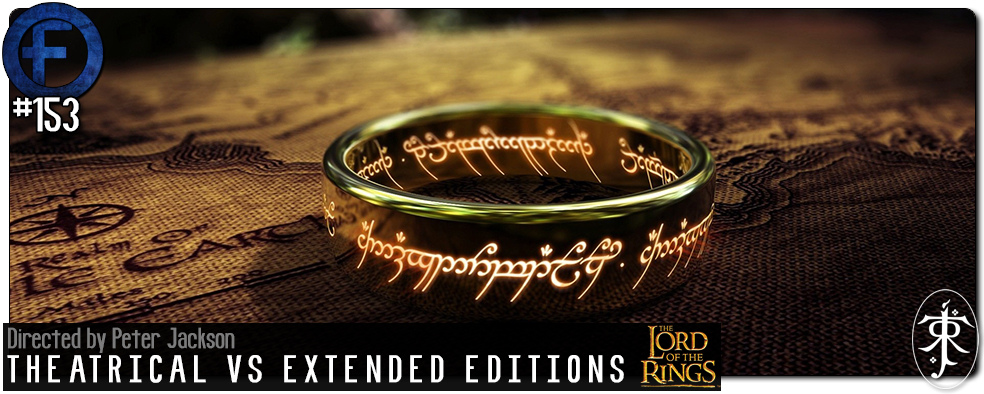
In the rush to capitalise on the success and history of the epic nature of the film trilogy, Peter Jackson, thankfully, had enough foresight to realise that this project would become one of the most amazing cinematic journeys ever captured on handycam. He envisioned a DVD to accompany the films that would give the viewer amazing backstage access to the creation of the three films, from opening scripting and history of the story, to the final film’s Wellington premiere in 2003, and it’s subsequent Oscar sweep, and eventually to the creation of the Extended Edition of the film, seeing his work bow out into history as one of the most celebrated film trilogies of all time.
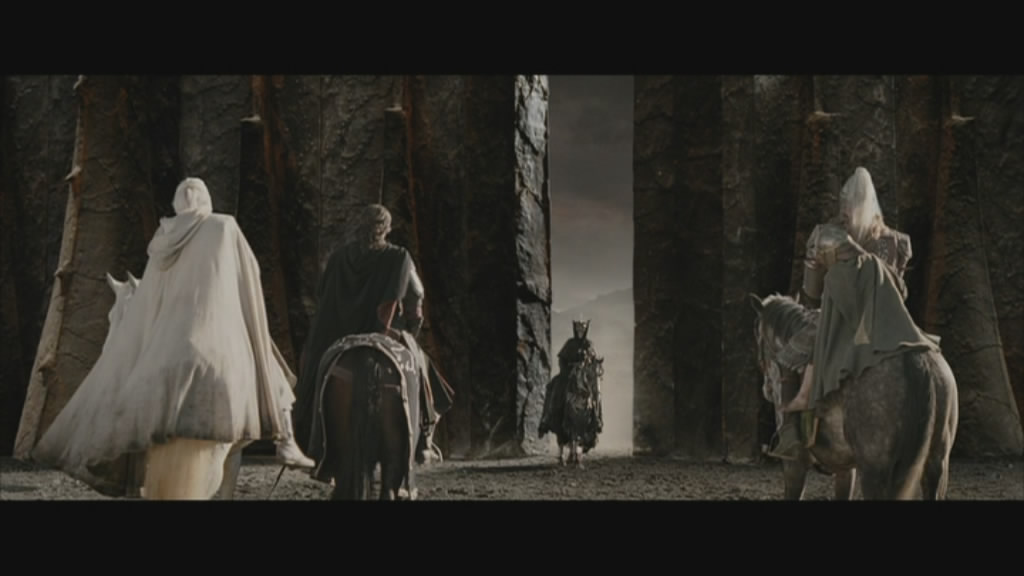
New Line gave Jackson unprecedented carte-blanche to go back and insert unused footage back into his original cuts of all three films. While Jackson claims that the original theatrical versions of the films are the intended versions, it’s fair to say that fan attention on his Extended Editions have been overwhelming to the point where they are now considered the canonical versions over what was originally shown in cinemas. We’re going to take a brief look, if we may, at the differences and editorial changes made for the Extended Editions, and how they change the structure and narrative flow of the Theatrical Versions.
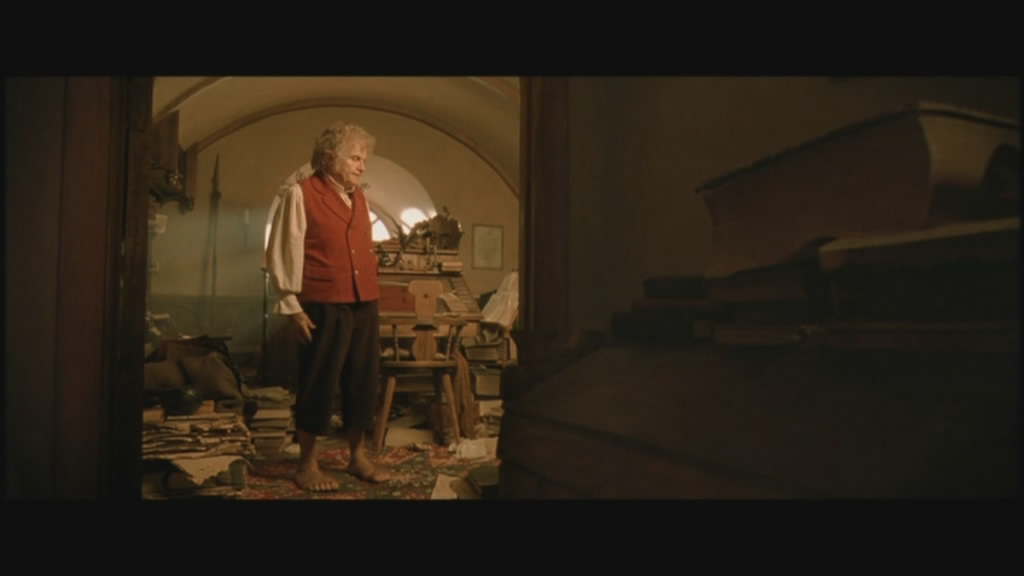
A Longer Fellowship
Late in 2002, when the Theatrical DVD of Fellowship of the Rings was released, it contained a hint, a glimpse, of what would be known as the Extended Edition of the film, with multiple unused sequences inserted back into the film proper. Promoted as a re-imagining of the original film, the inserted material would not simply be a random collection of deleted scenes, but an utter re-editing of the material to correspond with the footage already used. New music had been written to accommodate the change in edit, as the new footage either lengthened, or changed completely, the original versions. many critics and fans considered the original theatrical version to be almost impossible to improve on, and saw the tampering with the film as “fixing” the Mona Lisa. In other words, what could possibly be done to improve the film? And would adding length and extra scenes to it create something better, or worse.
It’s a fairly safe bet to say that the majority of fans of the films would consider the Extended Editions of each film an improvement on the original versions. By adding in some extra footage that expands, elongates and essentially, fleshes out, the characters and motivations of established lore, you get a fuller, more profound, sense of what Tolkien and Jackson were trying to achieve.
Bear in mind, however, that Jackson’s take on Middle Earth should not be classed as definitive. In fact, the director himself stated in an interview that he feels the story is just his own perspective on things, and that, were somebody else to make a version of Lord Of The Rings, no doubt it would be different tonally than his own.
So, for those following along, the Extended Version of Fellowship manages to freshen up and fill out some slight gaps in the theatrical version that, whilst not adding completely new sequences, add some depth to what we’ve already come to know. A major extension in Fellowship occurs at the very beginning, with a longer version of the opening monologue/preamble, including more footage from Elendil’s assassination, and this flows directly into a scene involving Bilbo writing his stories down in the Red Book, which is a reference to other Tolkien works.
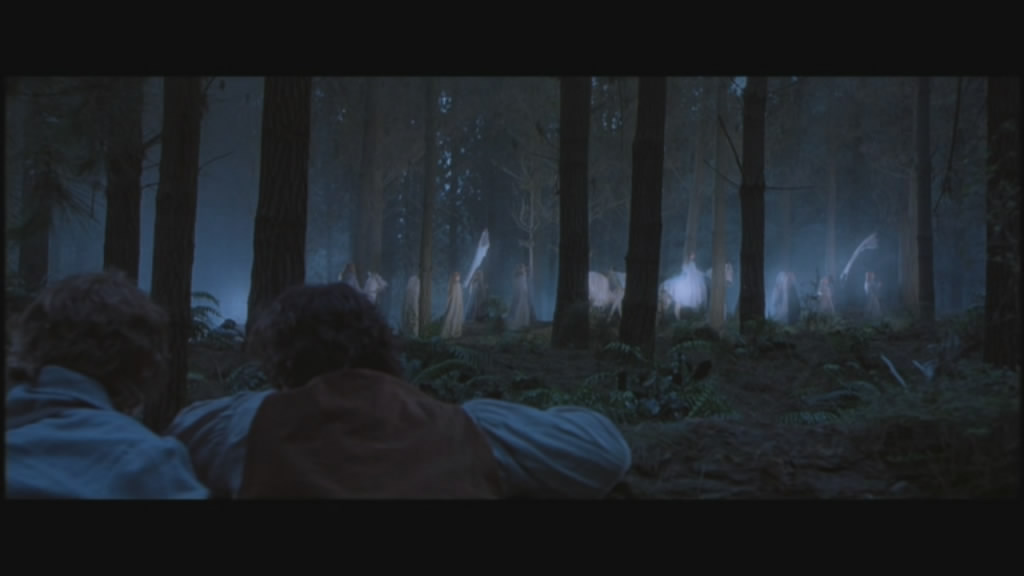
There’s a fair amount of extra material to be found in the Fellowship Extended Edition, mainly increasing the Frodo character and events that surround him: extra Lothlorien footage, battle footage and dialogue sequences, all of which serve to elaborate on Tolkien’s world, add extra emotional drama to an already chock-full narrative. Frodo and Sam’s surveying of the Wood Elves leaving Middle Earth, for example, in which Sam states that it makes him “sad”, does nothing to add to the main narrative of destroying the One Ring; yet it broadens the scope of Middle Earth, allowing something to develop from our lead characters to give them a more cohesive, layered emotional journey. The more we know of people, the more we tend to like them, as a general rule, so if Jackson gives us more detail about our characters’ mindset and moral structure, the more we can empathise, sympathise and care for them when things begin to go bad later on.
With Fellowship setting up the events told in Two Towers and Return, there’s less critical material threaded throughout the extended film, and more of a focus on character development, something I have always been a great proponent of.
So how does Fellowship Extended go up against the Theatrical version? Although certainly longer, is the added languidity and room to move open the film up for increased criticism? Yes, and no. Ambiguity aside, the Extended Version has been considered by the majority of critics and fans to be an improvement, albeit a subtle one, on the theatrical version. Structurally, the film doesn’t change too much, as the characters still encounter the same obstacles and emotional hurdles in the longer film as they travel along. There’s still the same emotional beats within the film, the same emotive highs and lows (Gandalf’s apparent death, for example, at the hands of the Balrog, is subtly expanded using more dialogue material prior to the event, in particular, the foreshadowing of danger as Gandalf warns Frodo to be wary of danger from within the Fellowship…. and glances up as Boromir wanders past) that permeate the edit, the characters not changing substantially from previously established norms.
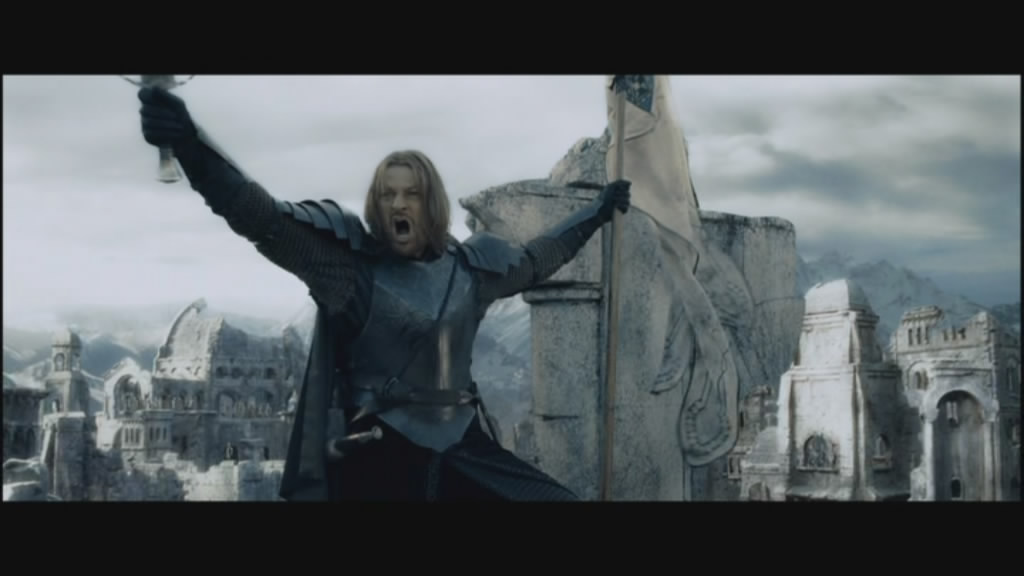
Taller Towers
The second film of the trilogy, The Two Towers, in a way became a better film as the Extended Edition, moreso than it could as a theatrical edit. The problem, as mentioned in the main article on the film, with Two Towers is that it has no definitive beginning or conclusion, it’s a story already begun and not quite finished, so Jackson’s difficult entry and exit from the film is only heightened by the added material in the Extended version of the film. Again, as with the theatrical edition, the Extended version of Towers is replete with problematic issues with it’s beginning, and as before, we slide into the depths of Moria through the wall of a mountain, and diverge onto a different path than we encountered in Fellowship. In Towers, we get a whole lot more Treebeard footage, an extended Helm’s Deep battle (if that’s even possible!) and much more political drama with Theoden, Saruman and Aragorn. In a similar vein to Fellowship’s Extended version, Towers relies more on the added material to fill in some breadth and width to the narrative as a whole, and although the added stuff isn’t essential for your enjoyment of the film, by comparison, Towers is a much better film in it’s lengthier version.
There has always been a lot of fan(atic) hatred towards Jackson’s vision of The Two Towers, primarily for it’s non-adherence to Tolkien’s original narrative to the degree it would appear to be outright revisionism. Characters and events take place that Tolkien never wrote about, such is Jackson’s re-writing of much of the middle book of Tolkiens’ work. However, I feel that as long as the “spirit” of the books is inherent in what’s on screen, then the truthfulness of the narrative compared to original (biblical?) text is not always required to be directly parallel.
For me, the extended version of Towers is the superior version: its examination of Theoden as King, and extrapolation of Eowyn as a dominant female character (of which there are far too few from Tolkien) are superb here, both become real characters with emotional journeys, both are significantly improved upon to the degree that their story in Return of The King is all that much more poignant.
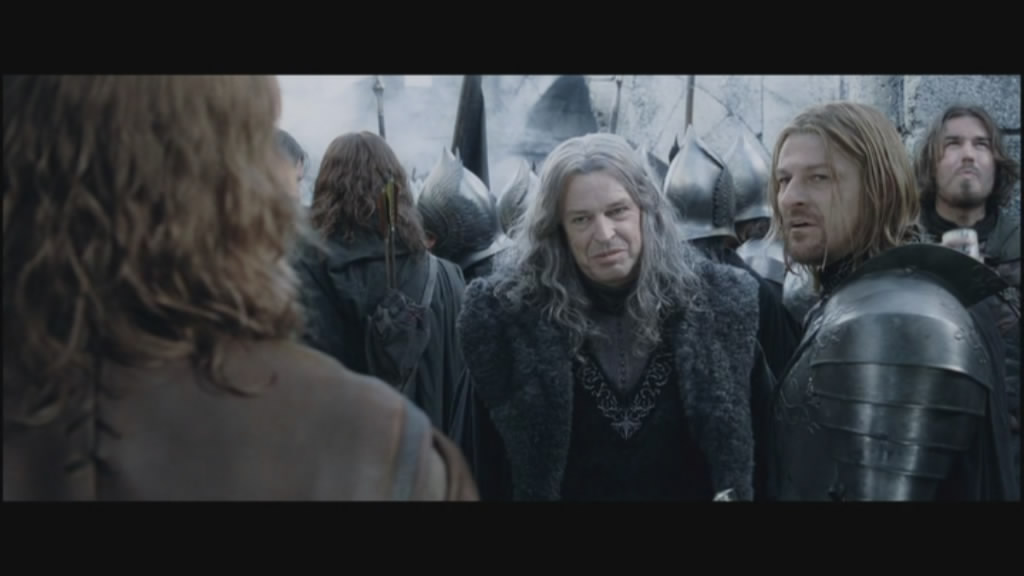
However, for most, Towers’ shining light in its Extended format is the inclusion of a key scene featuring Boromir, Faramir, and Denethor, the father of the two. There’s a sequence, which shows a reuniting of the brothers with their father, and the family dynamic that would go on to be a major development in Return of The King. The fact that this sequence was left out of the Theatrical version is disappointing to me, as I felt it created a wonderful touchstone moment, and dynamic dramatic twist, for those unfamiliar with Tolkien. Fans would be aware of the pressure Boromir was under to bear the family name, as well as trying to get out from under his father’s dominating thrall: and Faramir, who is the despised younger son, to try and win his fathers love by doing good deeds and showing his “true qualities”. Denethor’s reaction in this simple, single scene, explains a lot about Boromir in Fellowship and set’s up the events in Return. John Noble, playing Denethor as a dominating and slightly garrulous old man, clutching at pride and honour until the last, you suspect, is cringe worthy here (in a good way, that is) and you instantly begin to hate the character. Jackson’s overt portrayal of Denethor as a mad, hopelessly disappointed father in his film perhaps goes against that originally written in Tolkien’s texts, however it adds a rather substantial emotional weight to what would come later.
In short, this single scene makes The Two Towers’ Extended format a far superior film to it’s theatrical cousin.
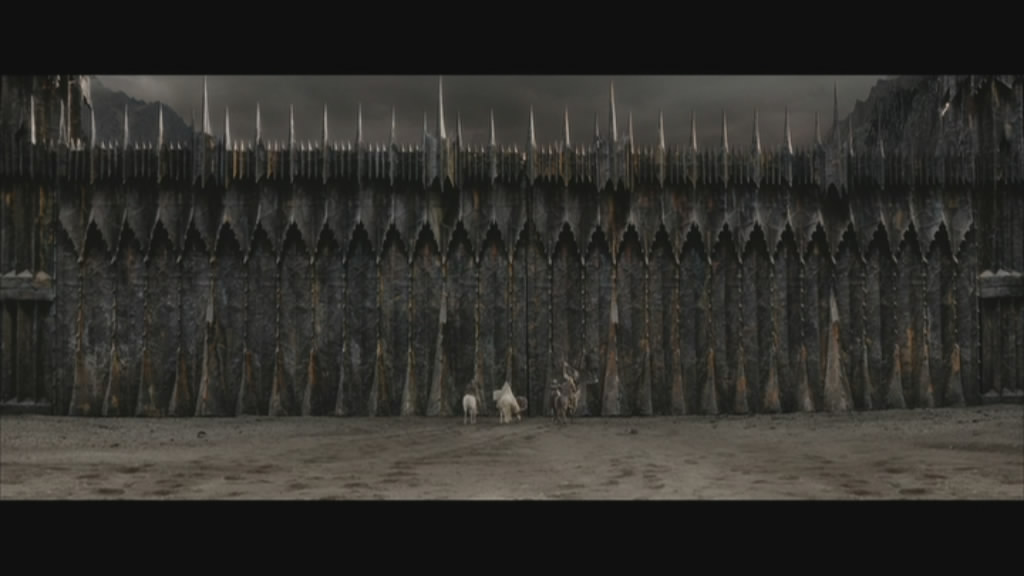
The Return of The Epic
At a little over four hours, you can be forgiven for thinking Return of The King’s Extended version is an exercise in bladder control and audience torture. To be blunt, the film is tremendously exciting, if a little wobbly in the narrative in it’s latter stages (with some bemusing and confusing lapses in logic in the story, time and space, as the battle of Pelennor takes place) experience. Return of the King is a massive narrative event, various strands of story vying for room to move within a film that’s bordering on the narcissistic in it’s length. Indeed, Jackson was criticised for the films multiple endings, of which there are many, as being overtly tedious and unnecessary (I disagree, to be honest!) and it was felt that had the film been trimmed slightly, it might have been even better! Strange to consider this when it won Best Film at the 2003 Oscars, the first time a fantasy film had ever achieved this feat.
However, most people agreed that the Extended Edition was a superb improvement on what was already being hailed as a genuine screen classic (indeed, it’s Oscar fortunes would have indicated it’s “classic” status long ago) and went on to perfectly conclude the massive story and journey undertaken by the previous two EE versions.
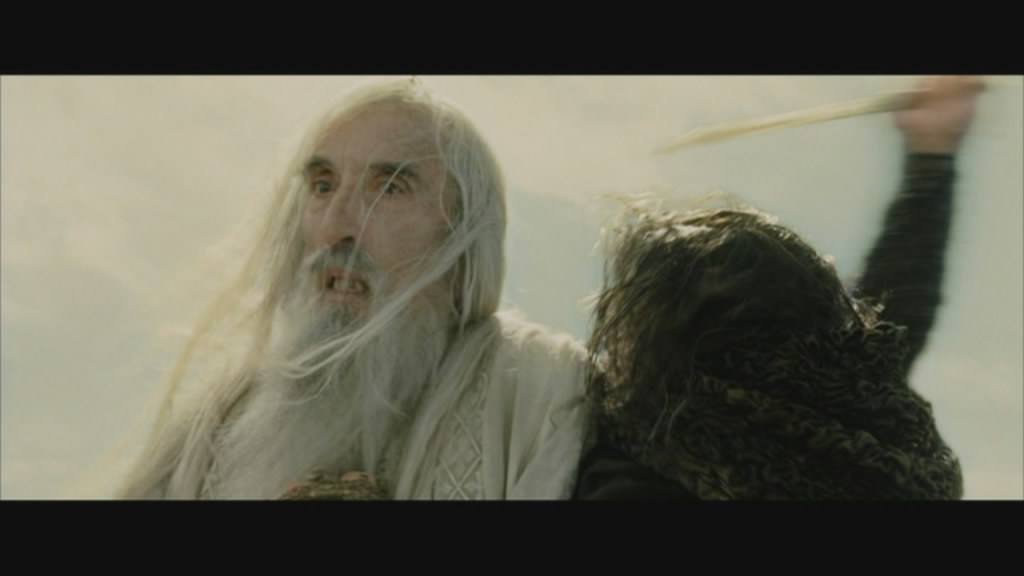
Return Of The King’s Extended Edition is the least narratively expanded of all three films: instead, the extra footage is a combination of dialogue sequences, action (especially in the Pelennor Field’s battle) and wholesale revision of the original storyline. All our major characters get a lot more screen time and character development (which can only be a good thing, surely?) and the battles and conflicts are expanded and improved significantly. The charge of the mumakil in Return is expanded, with a longer sequence of the carnage caused by these massive beasts. There’s greater import in the Mouth Of Sauron sequence, deleted from the Theatrical version since it brings up a logical loophole in the audience’s journey: it’s re-inclusion is genuinely dramatic, and altogether creepy….. if slightly too short. The Mouth Of Sauron, the spokesperson of Mordor, who appears when Aragorn leads the remnants of his army to the Black Gates, is played by Aussie Bruce Spence, who most will recognise from his many and varied roles in cinema, including Mad Max, and as the Trainman in The Matrix Trilogy. His CGI enhanced features are genuinely scary, and extremely well done. When he torments Aragrorn, Merry, Pipping and Gandalf with the supposed death of Frodo and Sam, it’s a genuinely moving moment. Although, given the fact that we, as the audience, know the pair are actually okay, you can see why Jackson removed it for the theatrical version… it’s redundant to a certain degree, and perhaps not really applicable for the climax of the film at that stage… which it was.
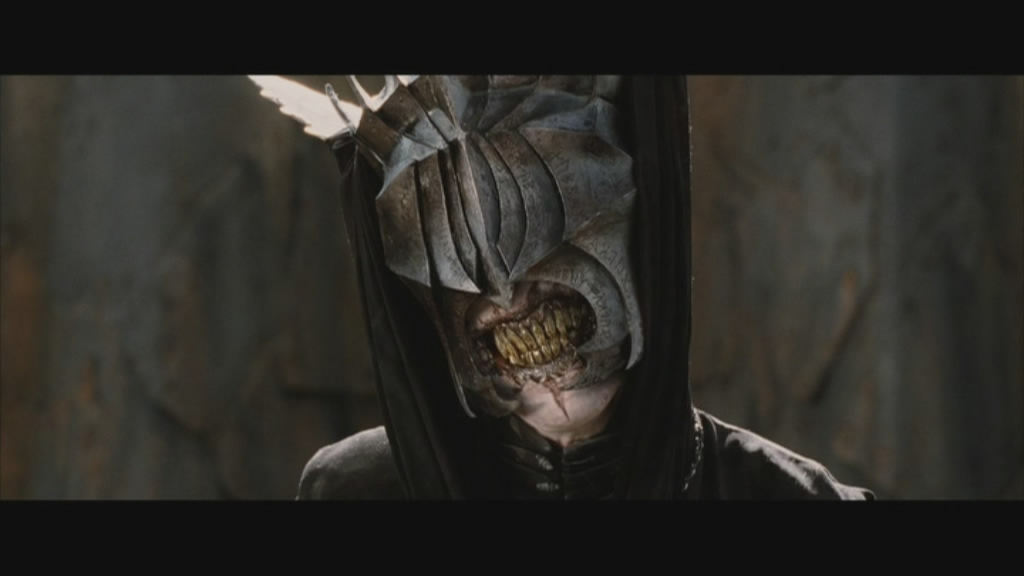
For me, though, there’s plenty to enjoy about the Extended Return Of The King. The originally excised death of Saruman, which was controversially dropped from the theatrical version (much to the dismay of both fans and star Christopher Lee) is restored, allowing us to see the final fate of the evil wizard. Lee was publicly fuming over the removal of what he considered a key scene, the death of the main antagonist from Two Towers, from the second and third film. At the end of The Two Towers, we would have seen his demise once Aragorn, Theoden, Gandalf and Gimli showed up at Isengard after leaving Helm’s Deep…. however, this was to be held over to film three. Once the edit on film three began to take shape, Jackson quickly realised that the scene, in which Lee plunges to his death after being stabbed by Wormtongue (Brad Dourif) on the top of the tower of Isengard, was not the best way to open a film… “killing the second film’s antagonist in film three is just wrong” Jackson is quoted as having said. So, Saruman’s death scene was removed from the theatrical version, much to the disgust of Lee. However, in the Extended Edition, the scene is returned in all it’s glory, and it finally gives us the satisfaction of seeing the Betrayer in his last moments, get what was coming to him…. it’s glorious.
Honestly, Return suffers a little more for it’s added length as a film than the other two, since the action seems to take an eternity to get to, this time around. However, for the weight and depth of the character development that Return now contains, you’d be hard pressed to be overly critical of what was put back in. I think, as far as the trilogy goes, that Return Of The King is the film that towers above all others for it’s extra content.
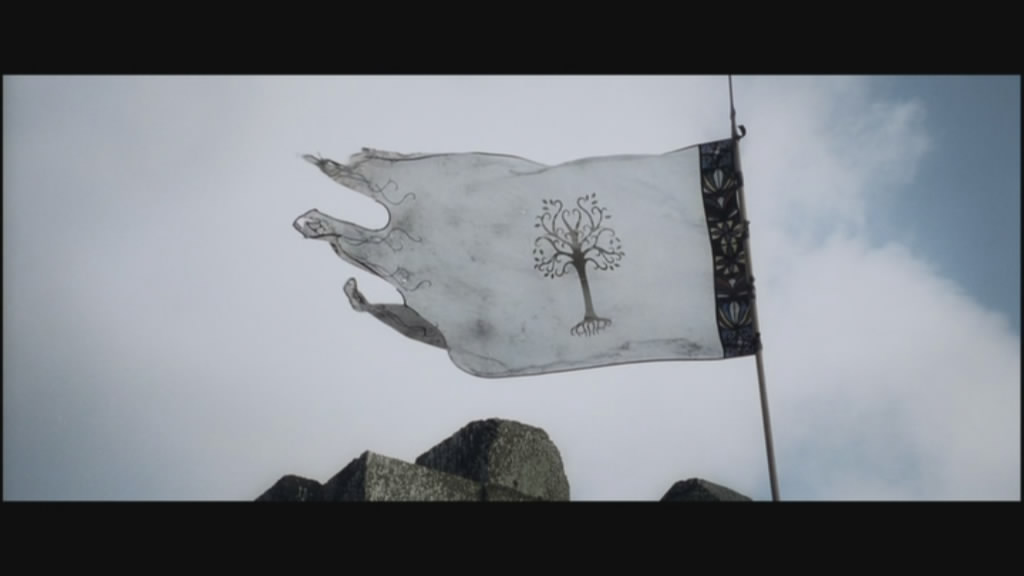
Which is better, Theatrical or Extended?
As any film fan, and they’ll tell you that the Extended Editions of the trilogy are perhaps the single greatest work of art produced by one director, with the possibly exception of The Godfather Trilogy. Lord Of The Rings represents the highest quality of craftsmanship, workmanship and directorial skill to bring to life: the un-filmable novel has finally been filmed in a way that will never be equalled in our lifetimes. While the original Theatrical versions are no doubt classic films in their own right, the Extended Editions allow the viewer to integrate themselves fully into the mental landscape of Tolkien’s world, to fully appreciate the scope of this massive film project, and to get a deeper understanding of what the characters, who are the most important thing of the whole show, are thinking, feeling and experiencing.
It’s my humble opinion that if you have never seen the trilogy in it’s extended format, then you simply haven’t seen it.


the pictures rock 😀
Glad you approve. This would all be for nothing if I didn't have tacit approval from Boromir himself!!!
I quite liked this review. The only thing it was missing was an easy to read table of the lengths of each movie, both the theatrical and extended versions, so I can tell just how much footage was added.
Assuming that's not too hard.
He he…. that's what the internet if for, mate!!